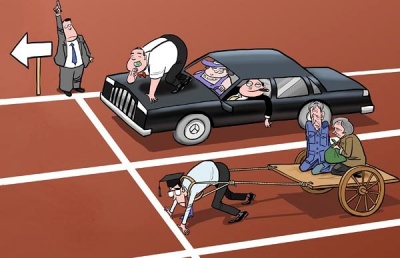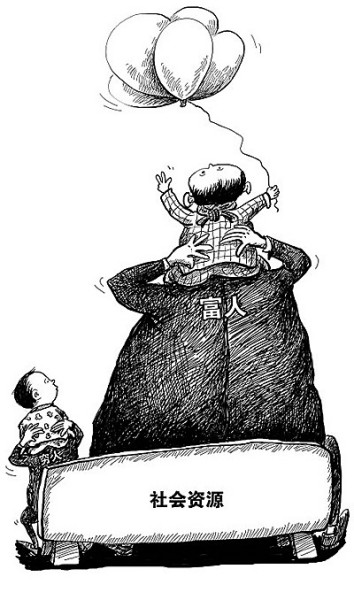“Poor second generation”的版本间的差异
来自China Digital Space
| 第3行: | 第3行: | ||
Before China’s reform and opening up, Communism had substantially leveled the playing field and most people were more or less on the same economic level. With Deng Xiaoping's free market reforms, the gap between rich and poor became more apparent. The children of those who prospered during the reform and opening up period are call the “rich second generation” and the children of those who did not prosper are called the “poor second generation.” Commentators complain that institutional barriers (high cost of education, importance of connections, etc.) prevent the poor second generation from moving up. | Before China’s reform and opening up, Communism had substantially leveled the playing field and most people were more or less on the same economic level. With Deng Xiaoping's free market reforms, the gap between rich and poor became more apparent. The children of those who prospered during the reform and opening up period are call the “rich second generation” and the children of those who did not prosper are called the “poor second generation.” Commentators complain that institutional barriers (high cost of education, importance of connections, etc.) prevent the poor second generation from moving up. | ||
| − | Read also: [[ | + | Read also: [[governing second generation]] and [[rich second generation]]. |
[[File:poor.jpg|400px|thumbnail|center|For the poor second generation, parents are more of a burden than an asset. For the rich second generation the opposite is true.]] | [[File:poor.jpg|400px|thumbnail|center|For the poor second generation, parents are more of a burden than an asset. For the rich second generation the opposite is true.]] | ||
2013年9月16日 (一) 22:59的版本
贫二代 (pín èr dài): poor second generation
Before China’s reform and opening up, Communism had substantially leveled the playing field and most people were more or less on the same economic level. With Deng Xiaoping's free market reforms, the gap between rich and poor became more apparent. The children of those who prospered during the reform and opening up period are call the “rich second generation” and the children of those who did not prosper are called the “poor second generation.” Commentators complain that institutional barriers (high cost of education, importance of connections, etc.) prevent the poor second generation from moving up.
Read also: governing second generation and rich second generation.






